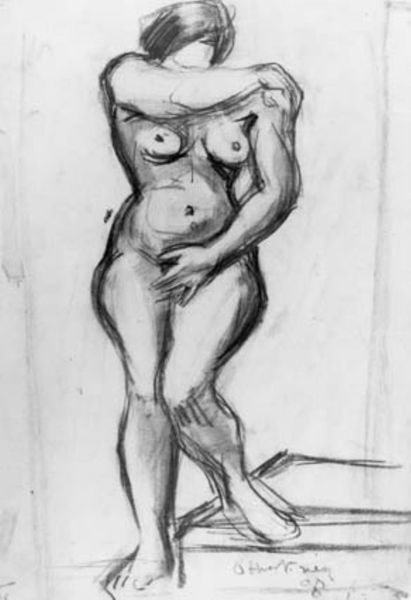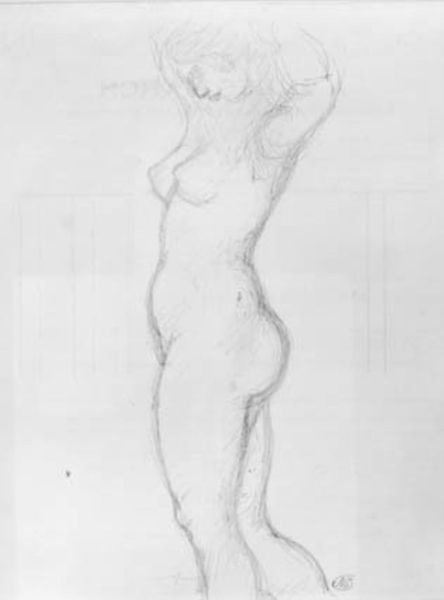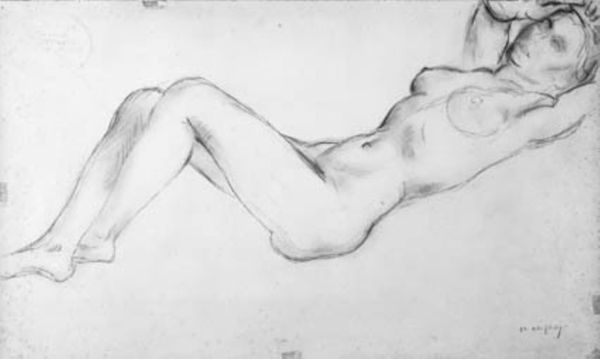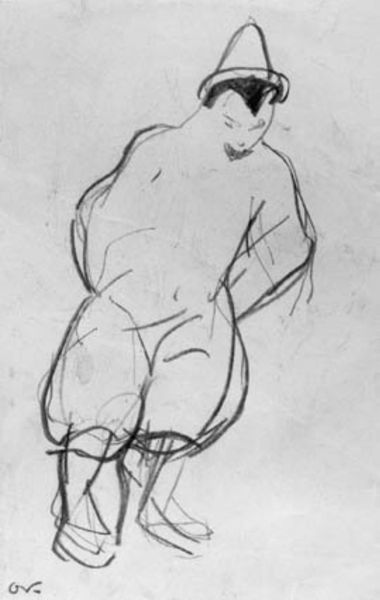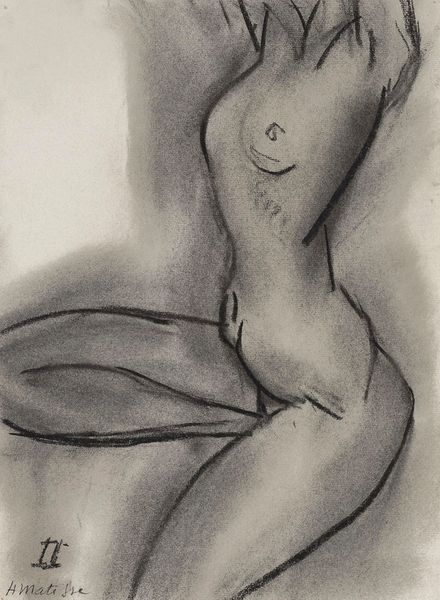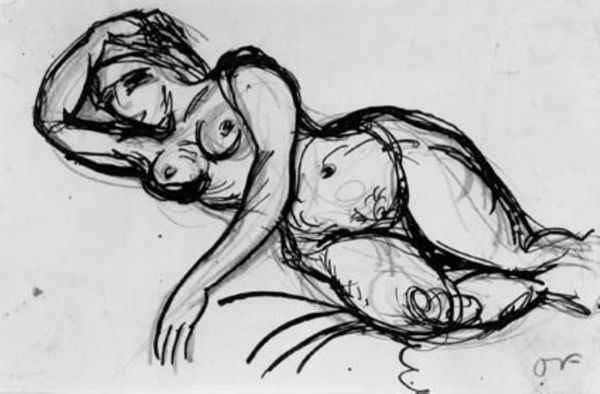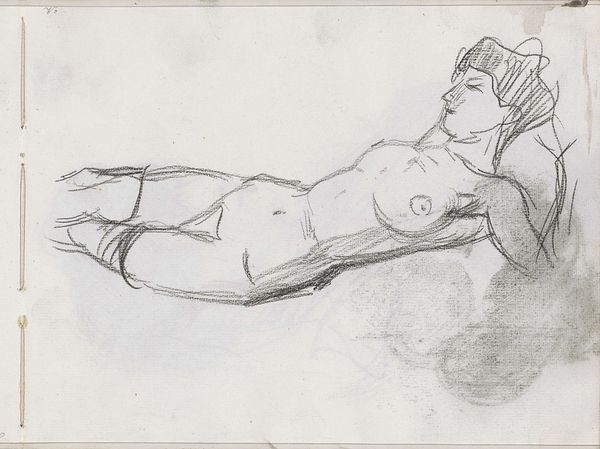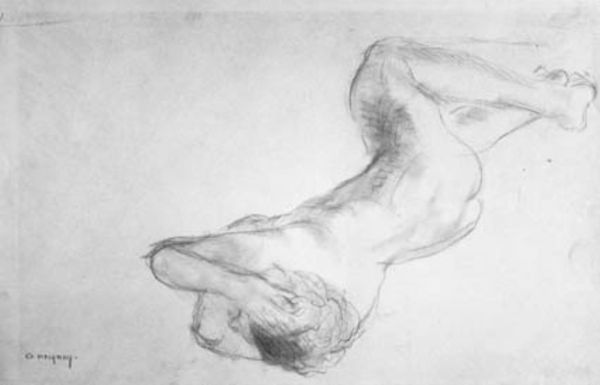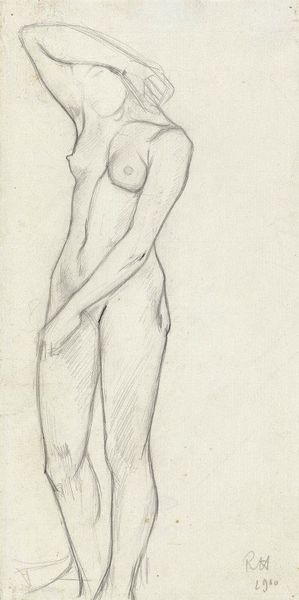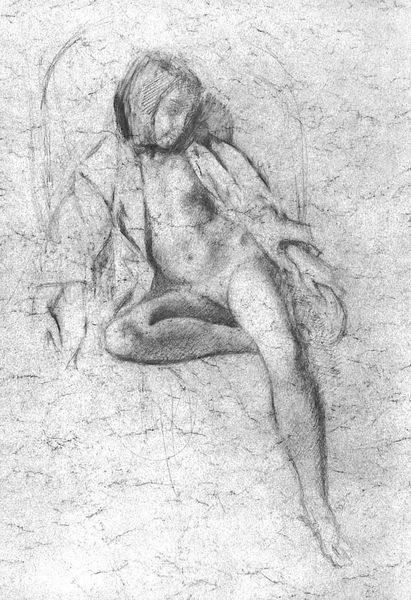
drawing, pencil
#
portrait
#
drawing
#
pencil sketch
#
pencil
#
expressionism
#
portrait drawing
#
nude
Dimensions: 207 mm (height) x 322 mm (width) (bladmaal)
Curator: This pencil sketch from 1912 is titled *Liggende nøgen kvinde i hængekøje*, which translates to “Reclining Nude Woman in a Hammock.” It’s by Othon Friesz, currently residing here at the SMK. Editor: It’s beautifully languid, almost collapsing in its relaxation. The quick, restless pencil strokes give a real sense of momentary observation. Does this speak to his Expressionist style? Curator: Absolutely. You can see his expressionistic tendencies in how he uses line and shadow to convey a mood of casual intimacy. Rather than precise realism, the emphasis is on capturing the feeling of a private moment. Editor: The use of pencil adds to that intimacy, right? It feels almost like peeking into his sketchbook. There's a roughness, a directness. It bypasses the pretension sometimes associated with “high art.” I can almost smell the graphite and imagine the scrape of the pencil. Curator: I like how you are thinking about materials. His use of pencil contributes to its unvarnished authenticity. The nude in art has such a complex and loaded history, often associated with ideals or symbolic meaning. Here, it feels more immediate, more human. I wouldn't disagree about intimacy either. Editor: How radical was this approach in 1912? Was it challenging any prevailing artistic norms in his context? Curator: He's working against the idealized nudes prevalent at the time. This isn't about flawless beauty; it’s about capturing the curve of a hip, the droop of a wrist, the fall of hair – a real, lived-in body at ease. And of course, the title specifies "hammock" – there are connotations with a bohemian, even tropical leisure. It hints at an increasingly commercial global South that could deliver that relaxation to your doorstep, with Friesz as our armchair traveler. Editor: That certainly casts it in a different light, considering labor and consumption in the global North at the time. Well, whether a vacation snapshot or something more complex, it’s still fascinating to observe Friesz’s rendering of ease. The work does capture that sensation in the figure's pose. Curator: Exactly. And to feel how a specific tool - pencil, paper - can also produce an emotion so vivid. It invites us to revel in the pure feeling of being present.
Comments
No comments
Be the first to comment and join the conversation on the ultimate creative platform.
